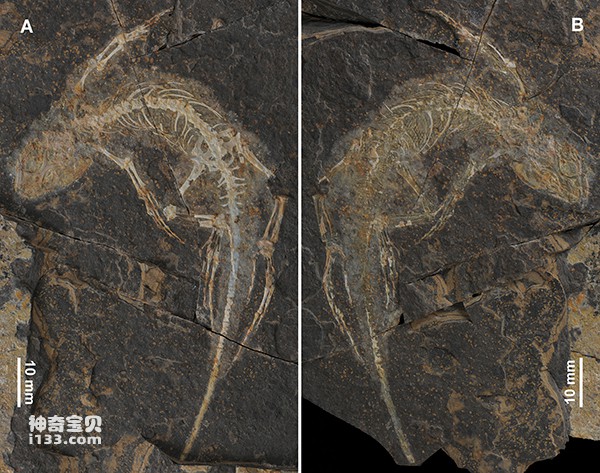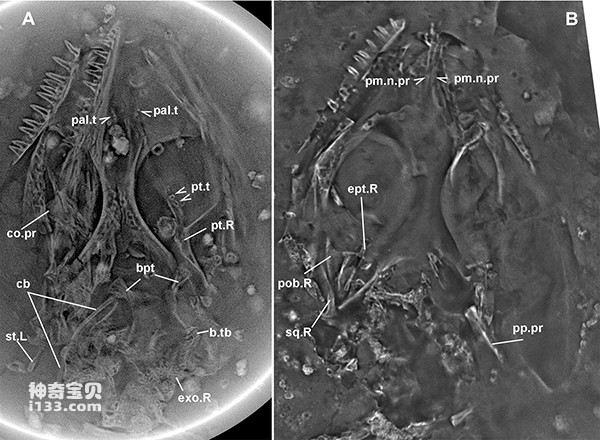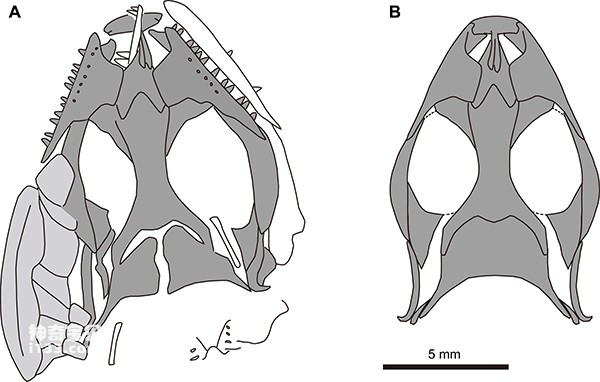The phylogenetic study of lepidosauriforms shows that the Jurassic was an important period in the evolution of squamates. During this period, squamates rapidly evolved into several major branch groups. But the Jurassic squamate fossil record is very limited. It has been recorded only in a few fossil sites in North America and Eurasia - such as the Morrison Formation in the United States, the Solnhofen Limestone in Germany, and the Karatau Formation in Kazakhstan.
In China, lizards in the Cretaceous period have very rich and diverse fossil records, such as Yabeinosaurus, Dalinghosaurus, Liuushusaurus and Xianglong ( Xianglong), Mimobecklesisaurus in Gansu, Pachygenys in Shandong; during the Late Cretaceous, Inner Mongolia, Henan, Jiangxi and other places had abundant lizard fossils and diverse fossil genera and species (15 genera and species in total) ). Relatively speaking, the fossil record of Jurassic lizards is very sparse. Currently, there are only two regional outputs: one is two unnamed juvenile lizard specimens from the Yanliao Biota; the other is a small amount of broken lizard materials from the southern edge of the Junggar Basin in Xinjiang, and several three-dimensionally preserved lizard skeletons in the middle of the basin. But it has not been reported in detail.
Recently, Dong Liping, Wang Yuan and others from the Institute of Vertebrate Paleontology and Paleoanthropology of the Chinese Academy of Sciences reported a very beautifully preserved Jurassic lizard specimen in the international journal Geodiversitas as a cover article, and named it Xie's Red Mountain Lizard. (Hongshanxi xiei), the genus name is taken from China's famous Hongshan Culture in this area five or six thousand years ago. The species name is dedicated to Mr. Xie Jingguo, who made important contributions to the protection of Jianping paleontological fossils. The specimen comes from the Coffin Mountain Fossil Site in Jianping County, Liaoning Province. The Coffin Mountain Fossil Site is considered to be equivalent to the age of the Daohugou Formation (165 Ma) or slightly younger (157 Ma). A large number of salamander specimens have been produced in this site and its surrounding strata, including many specimens with polydactyly and multiple limbs. The deformed specimen of Chunerpeton tianyiensis is the first discovery among Mesozoic anurans, and has been reported by Wang Yuan et al.
Using traditional paleontological methods and high-precision flat-panel CT scanning technology, researchers compared in detail with other lizard species from the Jurassic to Cretaceous in the world. The Red Mountain Lizard has a unique combination of morphological features, such as its left and right healed frontal bones. It is obviously longer, with a trifurcated rear edge. The posterior processes on both sides are long and jam the parietal bones from the outside; the parietal bones are short; the skull only has membranous bone plates (osteoderms) around the eyes and inferior temporal areas, and the forelimbs and hindlimbs are long. The only animal with similar frontal and parietal bone morphology to the Red Mountain Lizard is Hoyalcerta sanzi from the Las hoyas site in the Early Cretaceous of Spain. However, Hoyalcerta's lower jaw is very slender and has far more dentary teeth than the Red Mountain Lizard. Different phylogenetic analysis settings obtained different phylogenetic positions of red mountain lizards - at the basal position of squamates, or at the basal position of the traditional "Scleroglossia", which illustrates the system of early squamous species. Position is influenced by systematic relationships among the various major groups of squamates.
Original link: https://doi.org/10.5252/geodiversitas2019v41a16

Photos of the holotype of Red Mountain Lizard (JCM-HS 0001) (Photo courtesy of Dong Liping)

High-precision flat-panel CT scans reveal some of the unexposed skull bone features of the red mountain lizard (Photo provided by Dong Liping)

Comprehensive line drawing and skull restoration line drawing of the holotype skull of Red Mountain Lizard (Photo provided by Dong Liping)
animal tags:
We created this article in conjunction with AI technology, then made sure it was fact-checked and edited by a Animals Top editor.